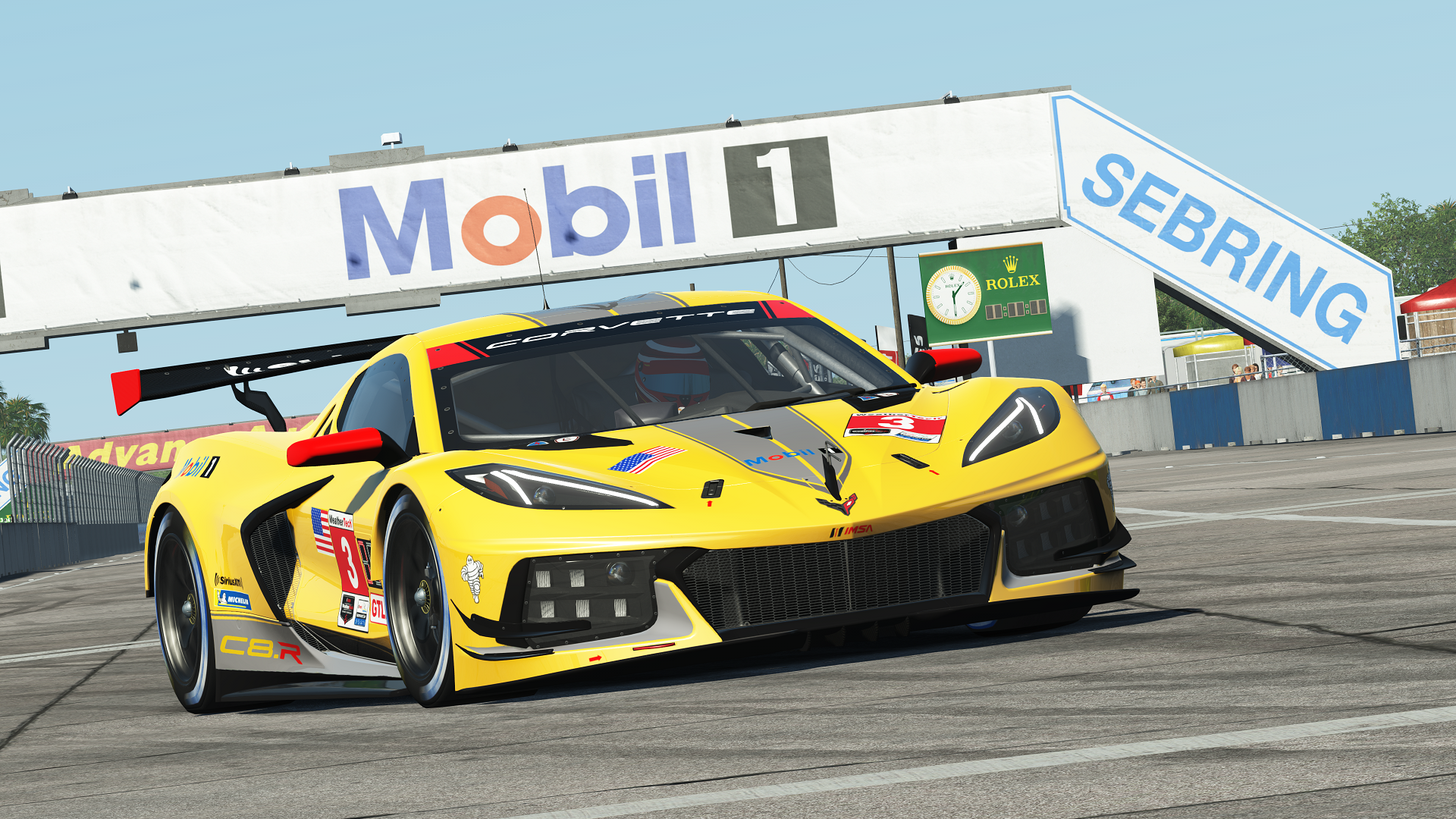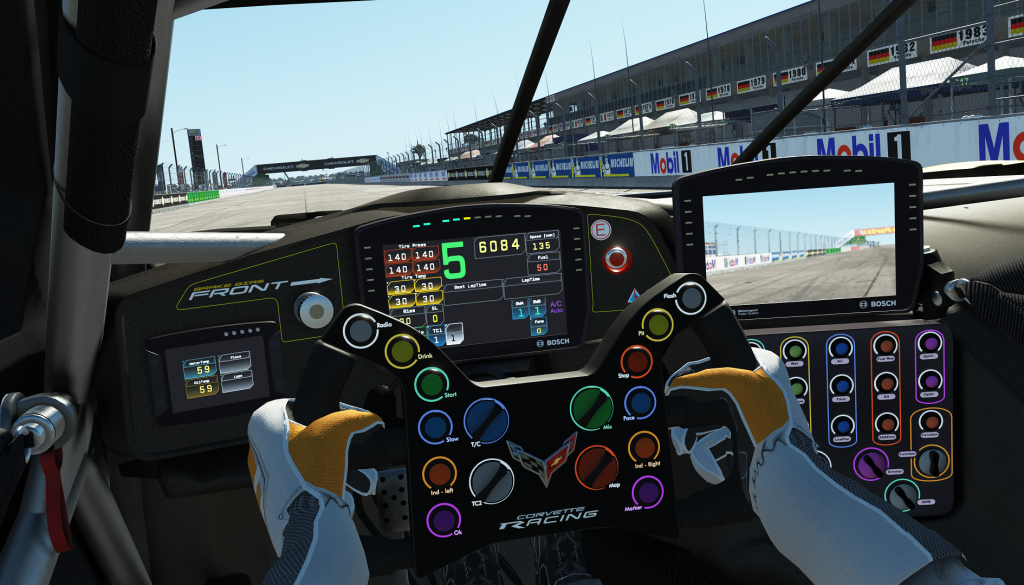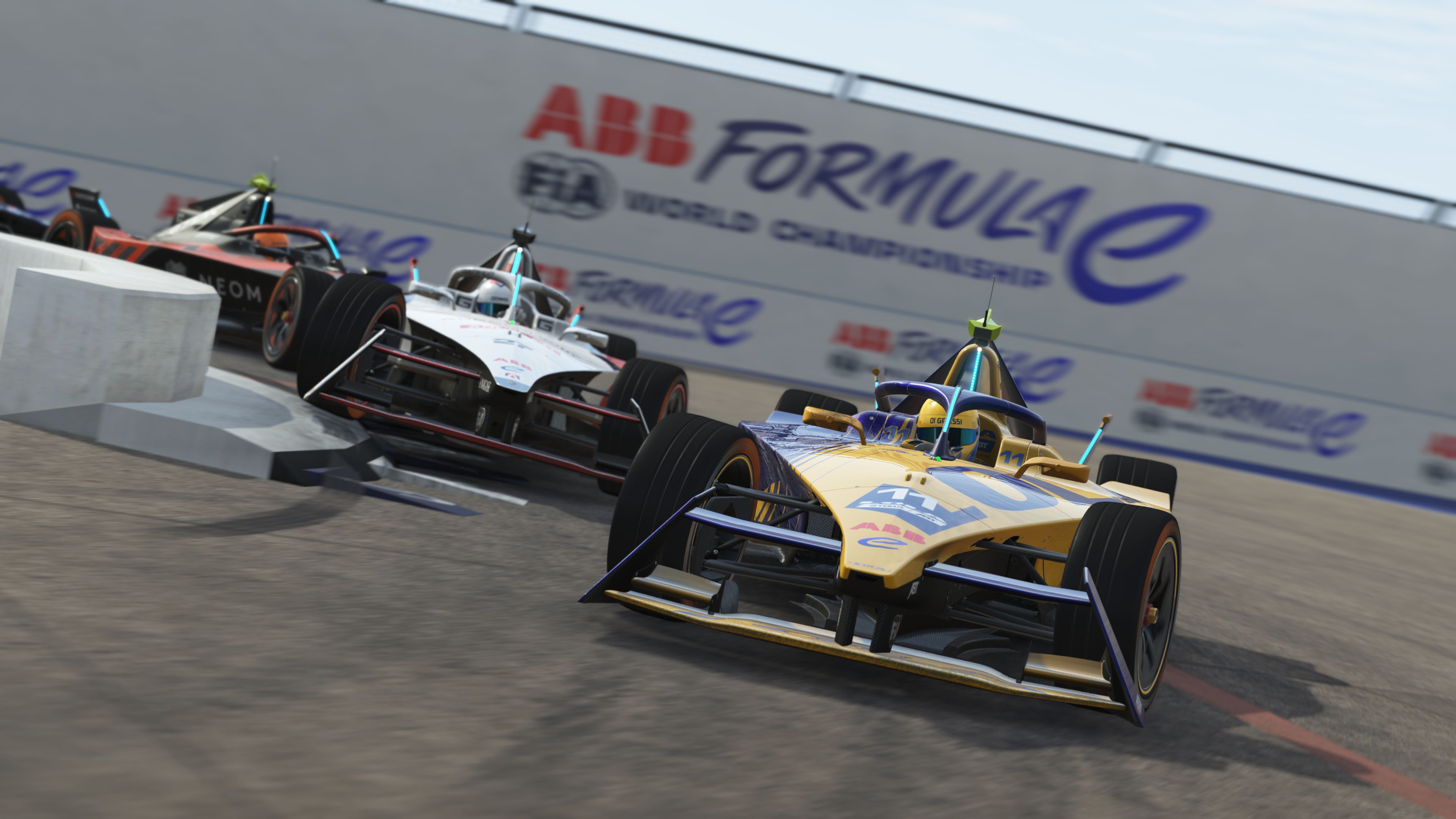The latest and somewhat controversial GTE racer from Chevrolet nevertheless retains much of the character of previous Corvette race cars, whilst firmly bringing the marque into line with the more modern and European centric offerings from rival manufacturers.
Moving away from tradition to a mid-engine design for the first time, the C8.R GTE has certainly proven to be a contentious entry into the fabled stable of Corvette race cars, one that only now is beginning to find its feet within the passionate Corvette fan-base following some notable successes out on the race circuits of the world.
History
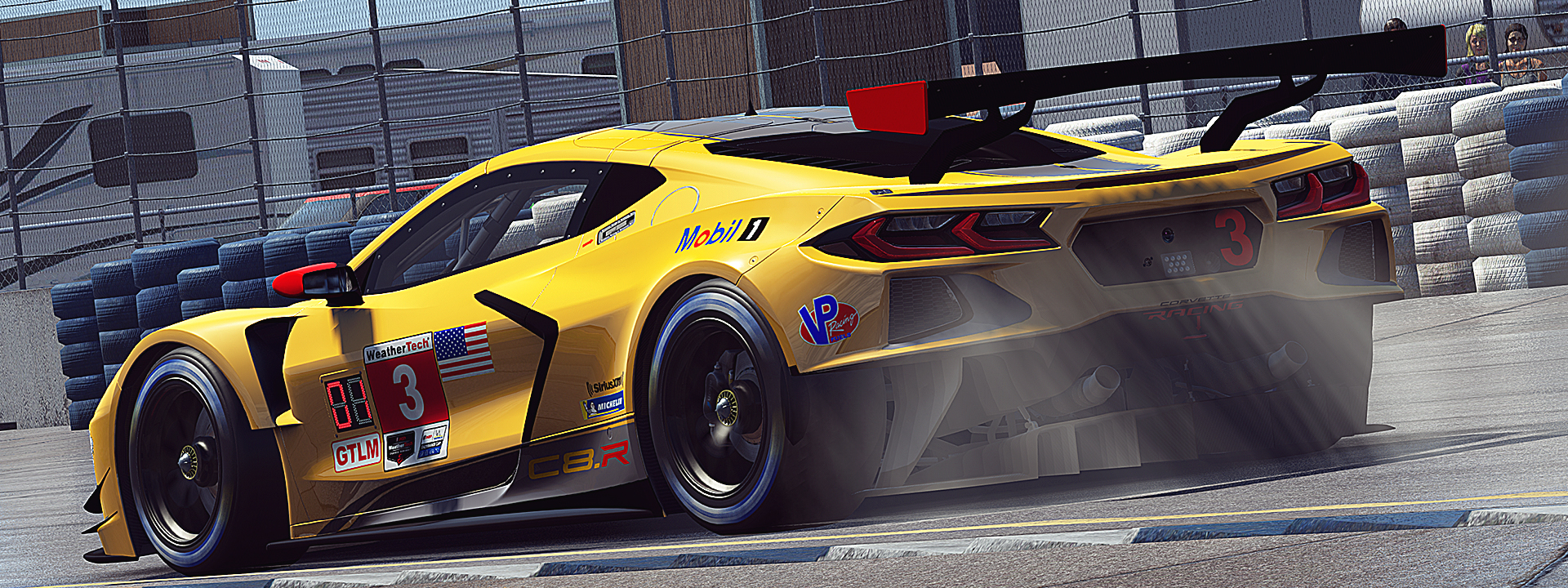
Developed by renowned American organization Pratt and Miller in collaboration with Chevrolet US in time for the 2020 racing season, the C8.R already faced a monumental task to live up to expectations, even before a wheel was turned in anger. Replacing the venerable and hugely popular C7.R was never going to be an easy undertaking for the American marque, as the bright yellow predecessor firmly found itself as a fan favourite in closed top GT racing since making its competitive debut back in early 2014.
However, with time marching on and an ever-increasing level of competition throughout the world of endurance racing, Corvette found themselves needing to up their game should they wish to stay in touch with the latest breed of GT racer, having found the C7.R starting to lack outright competitiveness in the face of stiff competition from the likes of Porsche, Ferrari, Ford and BMW in recent seasons.
Determined to re-establish the brand as a force to be reckoned with both home and abroad, the design teams at Chevrolet and Pratt & Miller quickly went to work to adopt the new C8 into racing form, bringing together their collective experience to produce a wholly ground up design in time for the start of the 2020 IMSA SportsCar Championship opening round at the legendary Rolex Daytona 24 Hours.
The new car would hit the track competitively for the very first time in with a two team, six driver strong works Corvette line-up at Daytona, immediately raising eyebrows as the #3 machine of Antonio Garcia set the pace in the GTLM class during early practice at the Florida venue – an unexpected turn of early competitiveness for a car that was clearly still at the very beginning of its competitive journey in GT racing.
Somewhat unsurprisingly, that early raw speed wouldn’t transfer to qualification and the race, as the yellow cars faded to third and fourth on the starting grid behind the dominant Porsche squad, Race day would very much be a case of damage limitation for the team, with numerous issues preventing the two car squad from truly showing the outright pace of the new challenger, yet ending the day with a very solid fourth in class for the #3 machine of Nicky Catsburg, Antonio Garcia and Jordan Taylor, a lap down on the winning Rahal Letterman Lanigan BMW squad at the front of the class field.
With an encouraging start under their belt, Corvette Racing firmly stepped up for the remainder of the 2020 IMSA calendar, with the #3 car eventually taking team and driver honours at year’s end, backed up by third in the teams standings for the sister #4 machine in what was a remarkable first year of competition.
Building on that early success, 2021 would be even more successful for the squad as they made a triumphant return to the 24 in February 2021, taking a 1-2 lockout of the GTD class with the #3 and #4 machines, and a second successive class title in the main series, with the #3 car this time going one better to help the team finish first and second in class within the teams’ category.
Technical Specs
- Engine: Chevrolet LT6 V8
- Capacity: 5.5 Litres
- Power: 500hp
- Weight: 1240kg
Achievements
- Debut: 2020 Daytona 24 Hours
- Races Entered: 13
- Races Won: 7
- 2020 IMSA Constructors Champions
- 2020 IMSA Drivers Champions
The Car
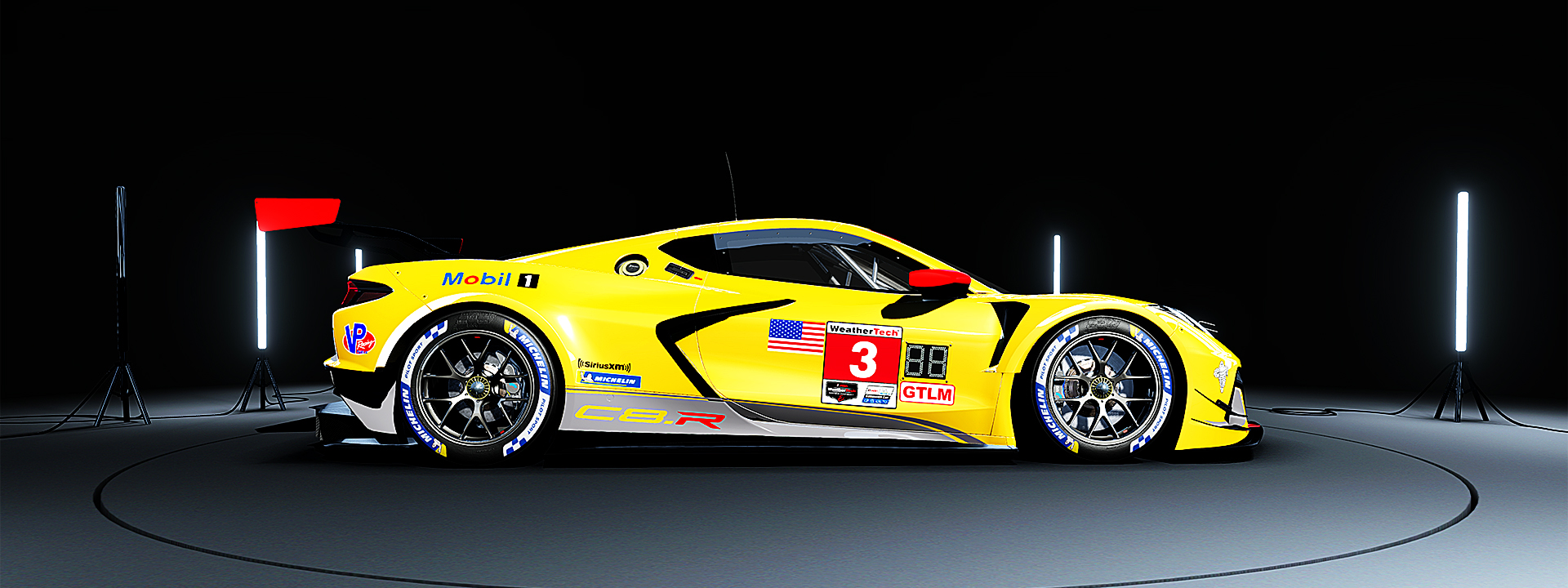
Corvette C8.R GTE | Steam Store: CLICK HERE
The mighty Vette is the first in the long line of racing Covettes to feature a mid-engine layout, more in tune with its European counterparts than the traditional front engine configuration favoured by the American brand to this point in their history. Gone for this new car would be the naturally aspirated, front-engined, longitudinally mounted LT5 5.5 litre V8 90°, replaced with a brand new LT6, good for 500 hp, and increase of 9hp from the previous unit, but importantly offering substantial benefits to both driveability, and the overall architecture of the car thanks to the mid-engine placement on the new C8.R.
Chassis wise, the C8.R is largely based on the 2020 Corvette Stingray. During the build process, Corvette claimed the C8.R benefits from a greater level of technology transfer between road and race car than has ever been the case in the past, which the manufacturer has leveraged into helping them shoehorn many additional enhancements into the racing version of the C8.R – sharing the highest percentage of parts between the production and race car than any previous generation.
With the introduction of the C8.R Chevrolet held the target of specifically introducing improved aerodynamics, increased stiffness and reduced overall weight from the previous generation C7.R. With a stiffer and lighter chassis than the previous car, and an intense development cycle proceeding its competitive debut at Daytona in 2020, these requirements have firmly been achieved by Chevrolet, and coupled with the engine and placement strategy, the car has very quickly proven itself to be one of the most prominent competitive forces in GT racing these last few years.
As one of the more recent GT cars introduced to rFactor 2, the Corvette C8.R enjoys a beneficial collaboration with Chevrolet to ensure our virtual recreation is as close to the real version as possible. Built entirely in house here at Studio 397 with the aid of detailed data from the manufacturer, the Corvette C8.R is not only one of the newest GTE racers in rFactor 2, but also one of the most enjoyable cars to drive and race on the virtual racetracks within the simulation.
The Corvette C8.R GTE – Available now in rFactor 2
